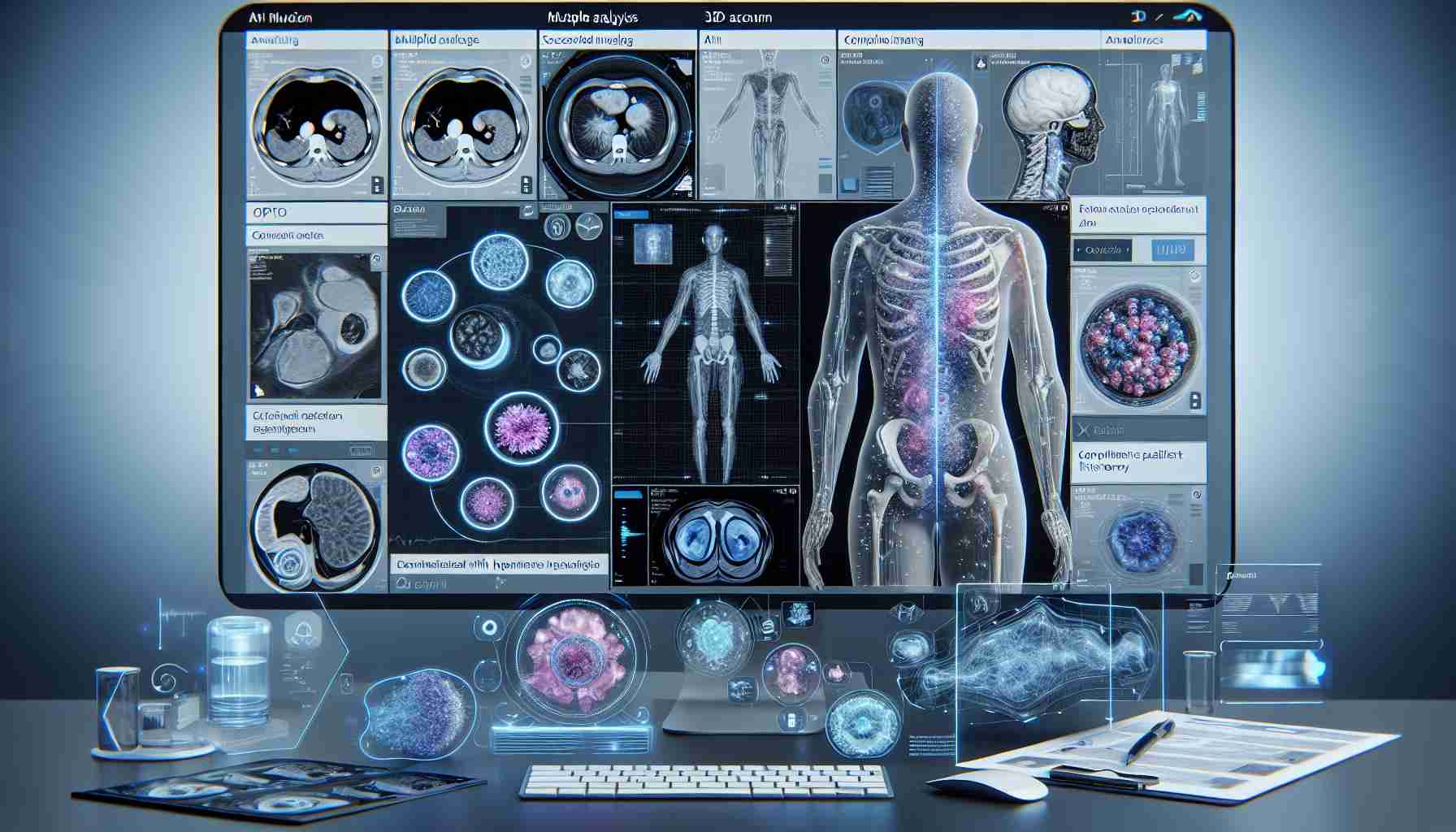Summarizing current advancements in biomedical technology, researchers have developed a state-of-the-art artificial intelligence system—named Tyche—that presents multiple interpretations when segmenting medical images, rather than providing a single, definitive answer. This tool acknowledges and incorporates the inherent uncertainty that experts often encounter in medical diagnostics.
Traditional AI models utilized in healthcare for tasks such as analyzing organ or cell images, or identifying signs of disease in medical scans, have been limited by their binary outputs. These models fail to encompass the range of expert opinions, potentially leading to misinterpretation and oversight in medical diagnostics. Contrarily, Tyche’s innovative approach allows it to offer several plausible outcomes for each image, recognizing the variability in human expert analysis and accommodating the subjective nature of medical image interpretation.
One of the notable strengths of Tyche, which was presented at the IEEE Conference on Computer Vision and Pattern Recognition, is its capacity to adapt to an array of segmentation tasks without the need for retraining between each one—side-stepping a significant and resource-intensive barrier present in traditional models.
The design of Tyche pivots on a versatile neural network architecture that can internalize examples of different expert opinions and produce multiple predictions from a single image input. It requires only a few examples to learn a specific task, streamlining its operation for clinicians. Such flexibility heralds a new era in medical analysis, emphasizing the nuanced realities of diagnosing complex health conditions.
Researchers from MIT, the Broad Institute of MIT and Harvard, and Massachusetts General Hospital, led by Ph.D. candidate Marianne Rakic, have opened channels to broaden Tyche’s capabilities, including the ability to integrate textual information and various image types into its learning process. Tyche represents a significant leap in medical technology, offering enhanced diagnostic performance and expediting the analytical processes in biomedical research and practice.
Current advancements in biomedical technology, particularly in artificial intelligence, bring to light significant strides being made in medical diagnostics. Researchers have developed an AI system, Tyche, which diverges from the conventional approach of AI-based medical image analysis.
In the healthcare industry, AI has increasingly become a tool for enhancing the accuracy and efficiency of diagnoses. Traditional AI models in healthcare analysis often provide single, definitive outcomes. However, medical diagnostics are inherently uncertain, with differing expert opinions on the interpretation of medical images. This is where Tyche stands out by offering multiple interpretations, thereby mimicking the spectrum of expert analysis in real-world scenarios.
The industry is at the cusp of a transformation with AI technologies like Tyche that can adapt to various segmentation tasks without the hefty requirement of model retraining. This is a notable shift from previous AI models that needed extensive datasets and training time to fine-tune their algorithms for each specific task. Tyche’s versatile neural network architecture requires only a handful of examples to understand a new task, significantly reducing the time and resources required for its operation and potentially revolutionizing medical analysis.
The research backing Tyche—a collaborative effort involving MIT, the Broad Institute of MIT and Harvard, and Massachusetts General Hospital—undoubtedly touches upon the promise of AI in healthcare. The AI system has garnished attention at the IEEE Conference on Computer Vision and Pattern Recognition, showcasing its potential. It’s worth noting that the market forecasts for AI in the biomedical sector are extraordinarily promising, with expectations of growth driven by the demand for improved diagnostic tools and the developing sophistication of AI systems.
Tyche’s capacity to incorporate multiple image types and textual information into its learning process further expands its utility across a multitude of applications. This reflects a broader industry trend, where the integration of disparate data types helps drive innovations in personalized medicine and therapeutic interventions.
However, issues related to the adoption of AI in the biomedical field remain. Questions around data privacy, the explainability of AI decisions, regulatory compliance, and the need for standardization are critical discussions amongst stakeholders. The reliability of AI’s interpretations and their clinical relevance is a subject of ongoing research and validation.
As Tyche continues to evolve, it may set a new standard in the industry for diagnostic accuracy and personalized patient care. The exploration of its capabilities and the subsequent impact on healthcare delivery is a fascinating look into the future of medicine.
For readers interested in further exploring AI’s role in healthcare and biomedical advancements, reputable sources such as World Health Organization, National Institutes of Health, and U.S. Food and Drug Administration provide valuable insights into industry standards, regulatory affairs, and future outlooks. It is, as always, critical to ensure the use of validated and reputable sources when examining such complex and rapidly evolving topics within the biomedical industry.
The source of the article is from the blog rugbynews.at

